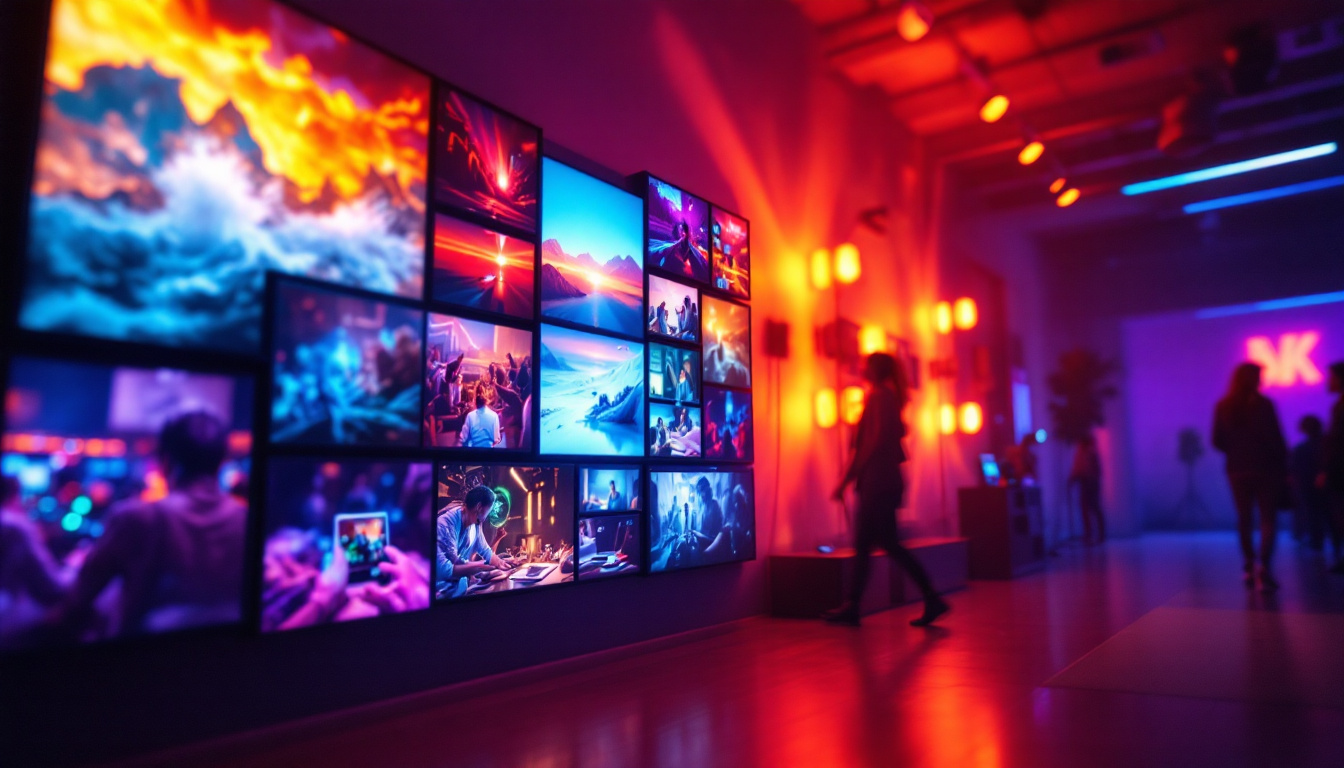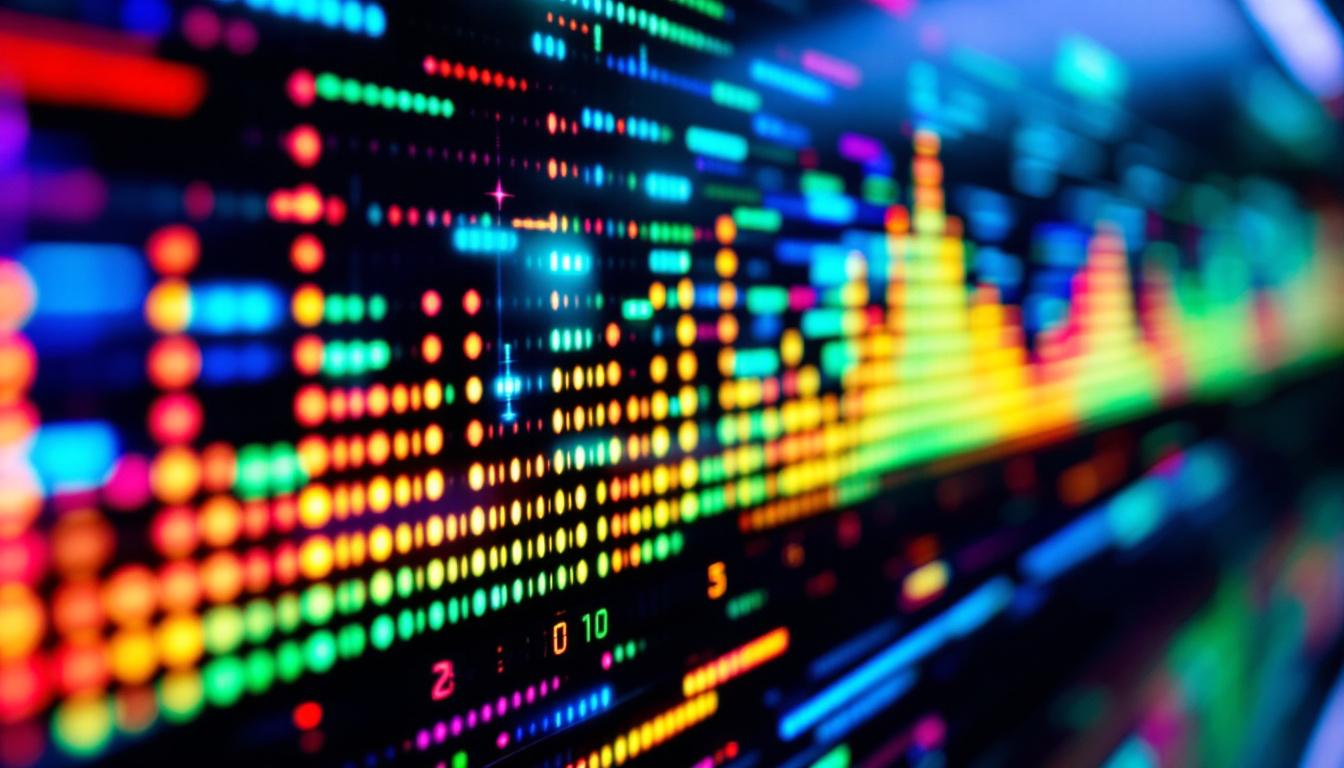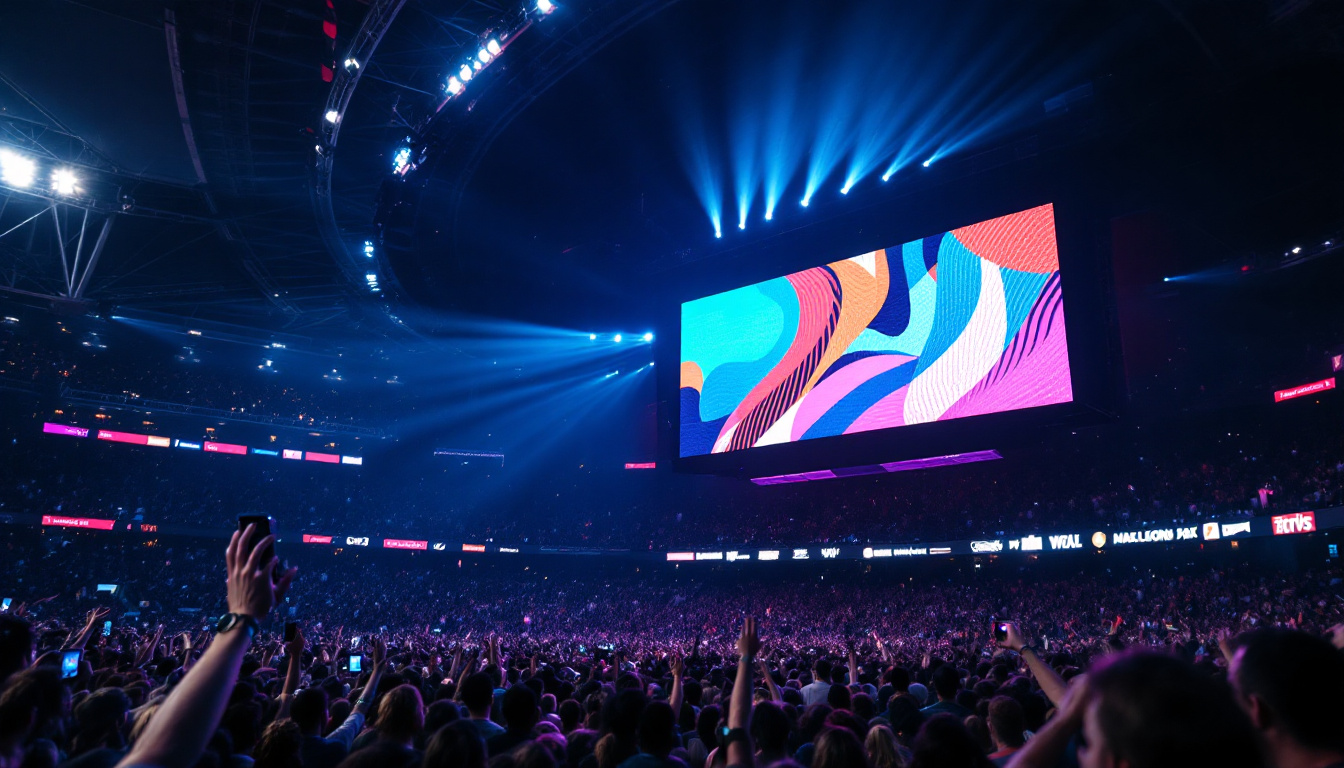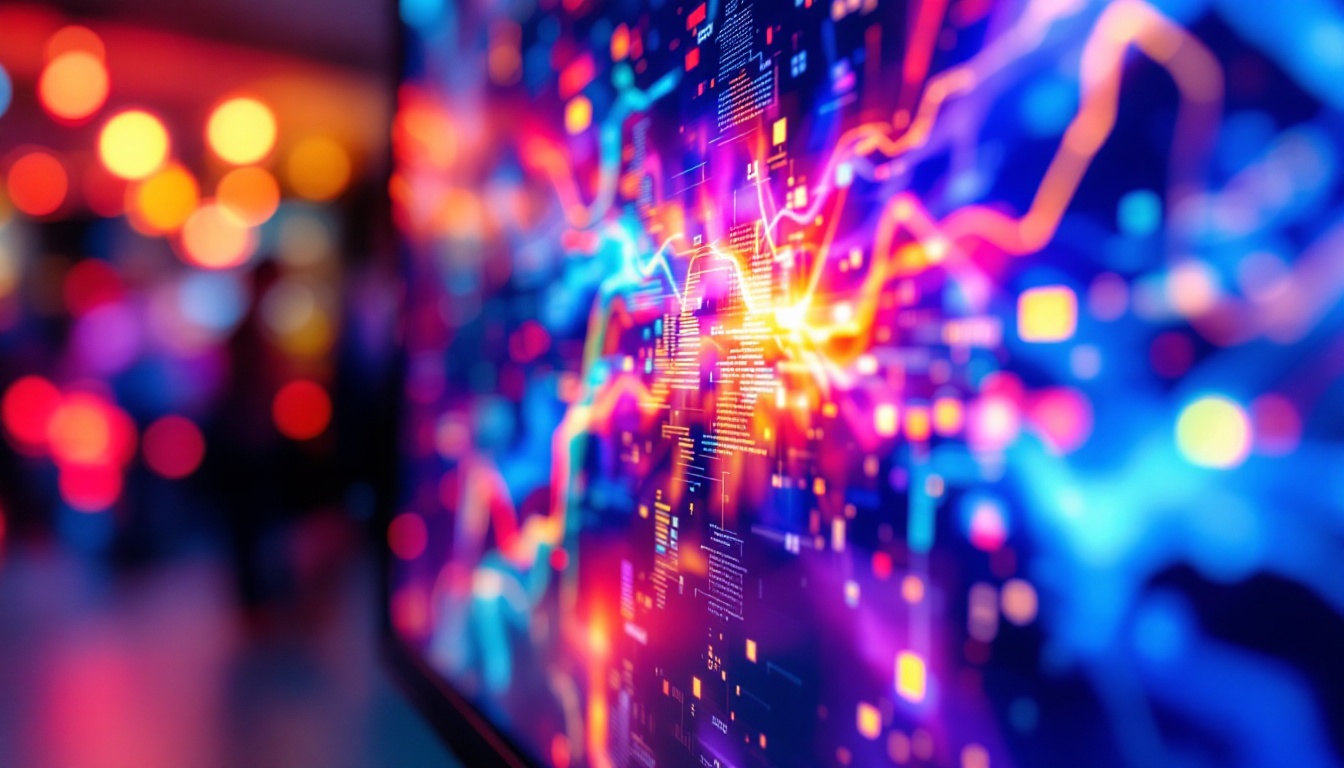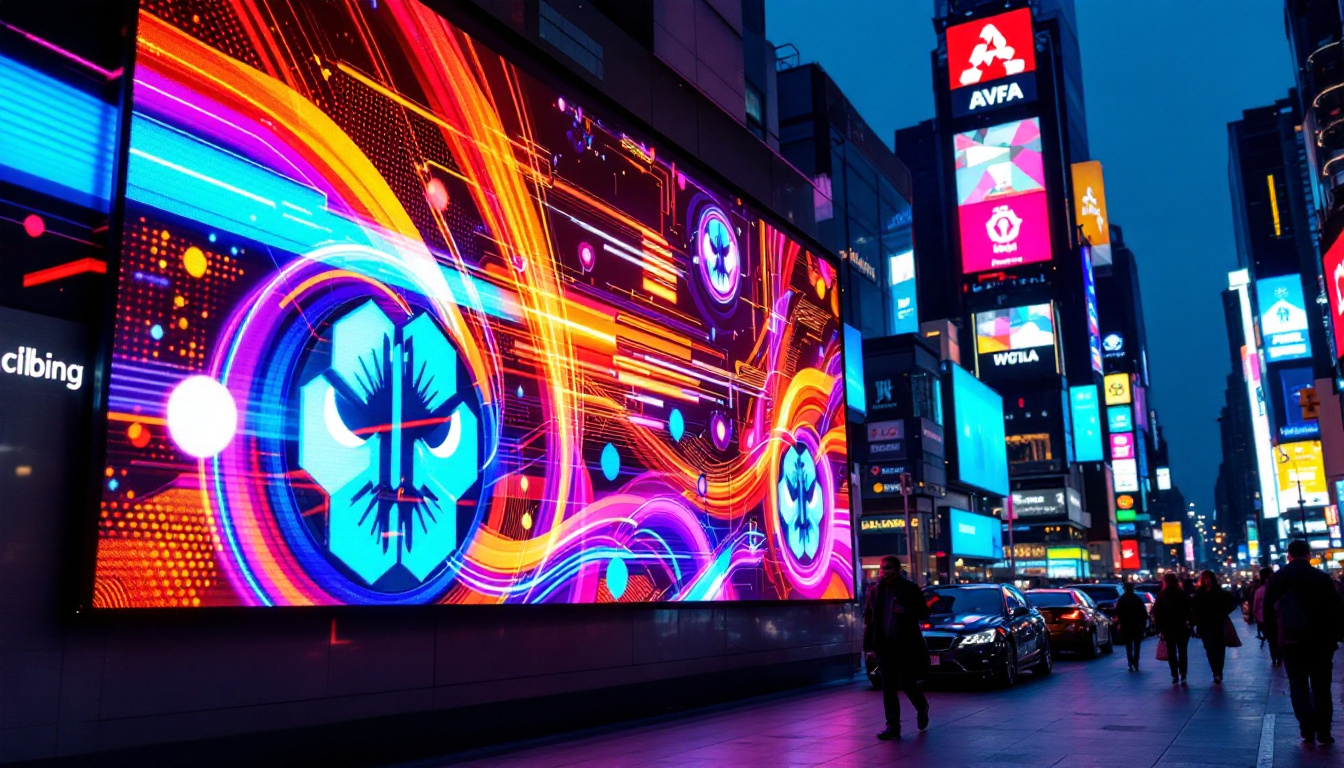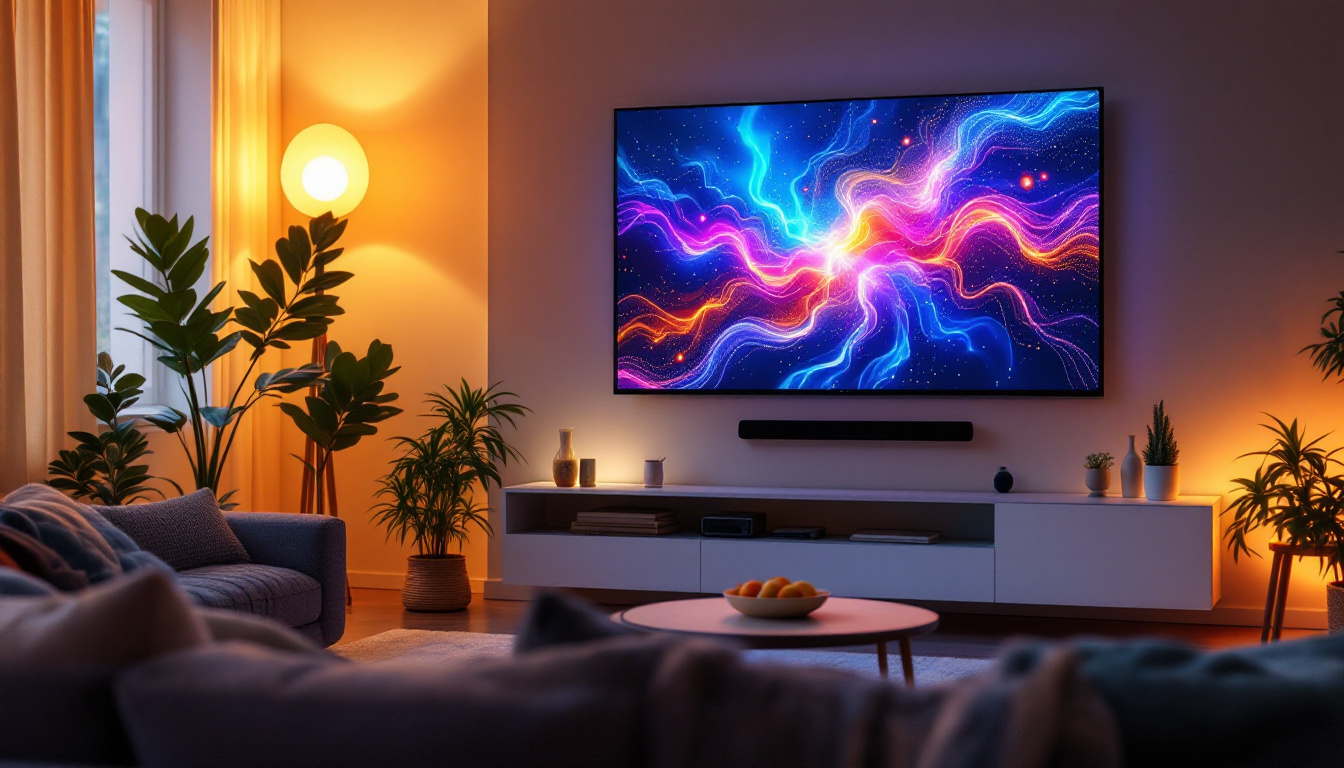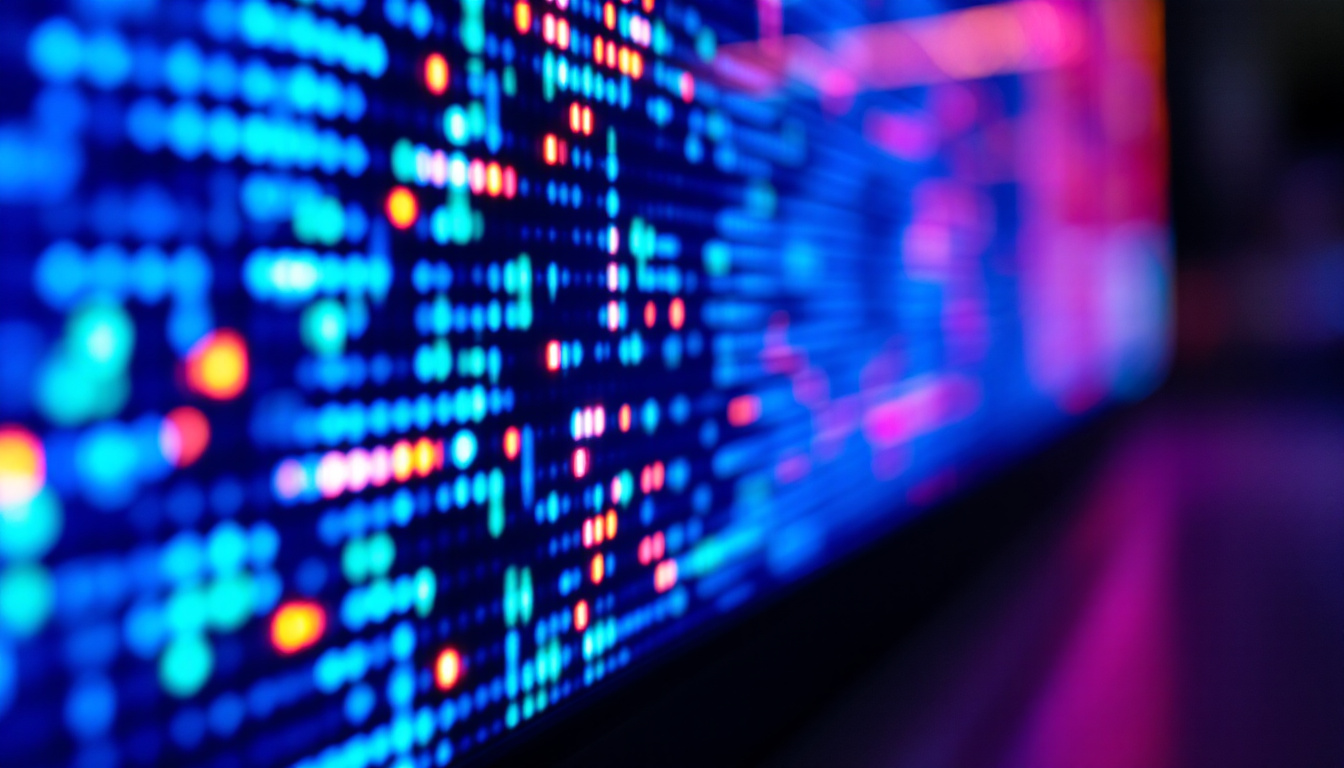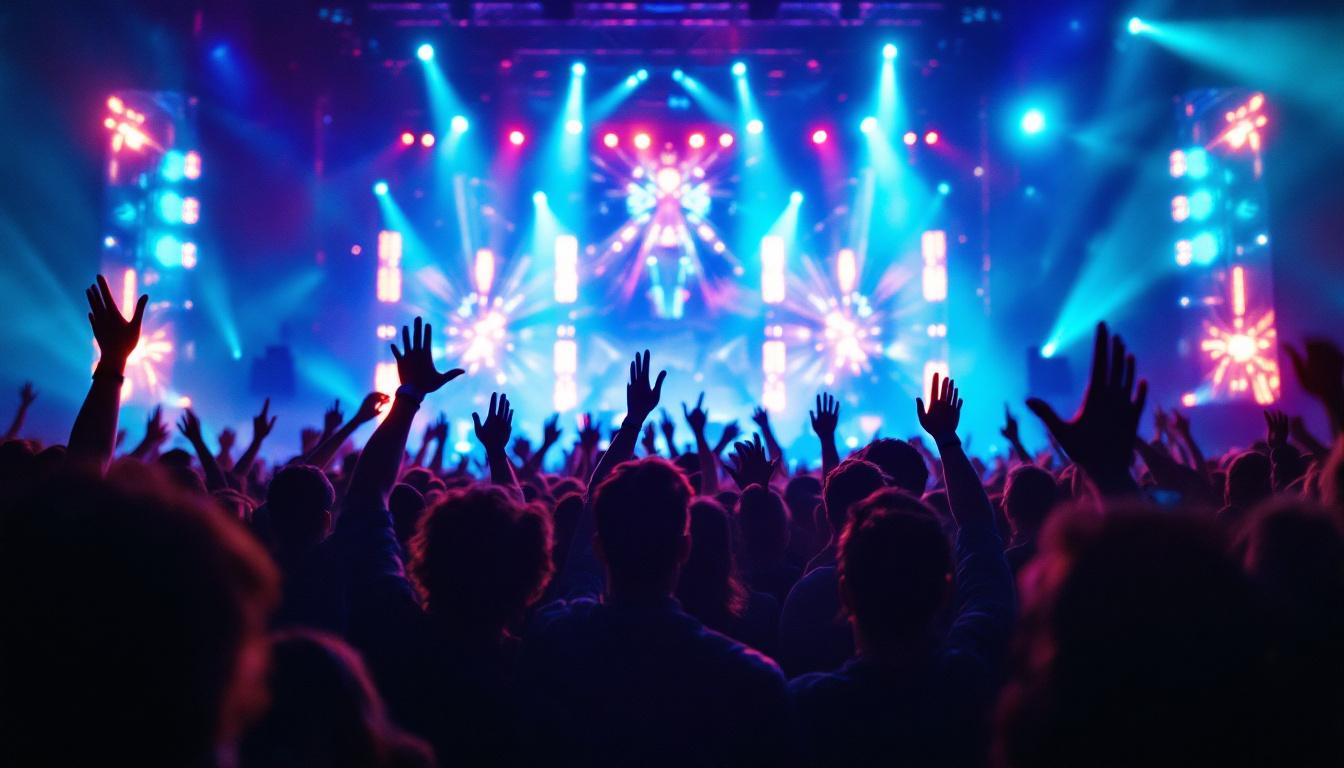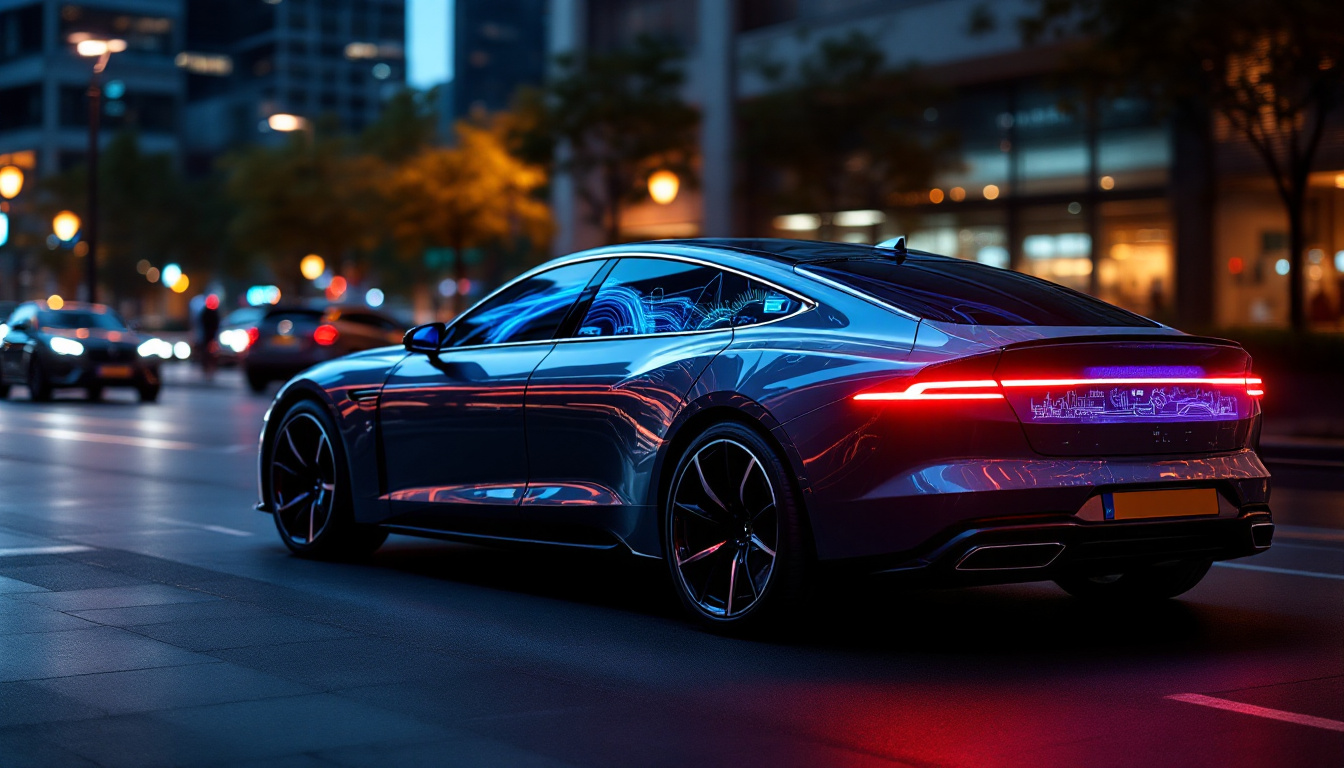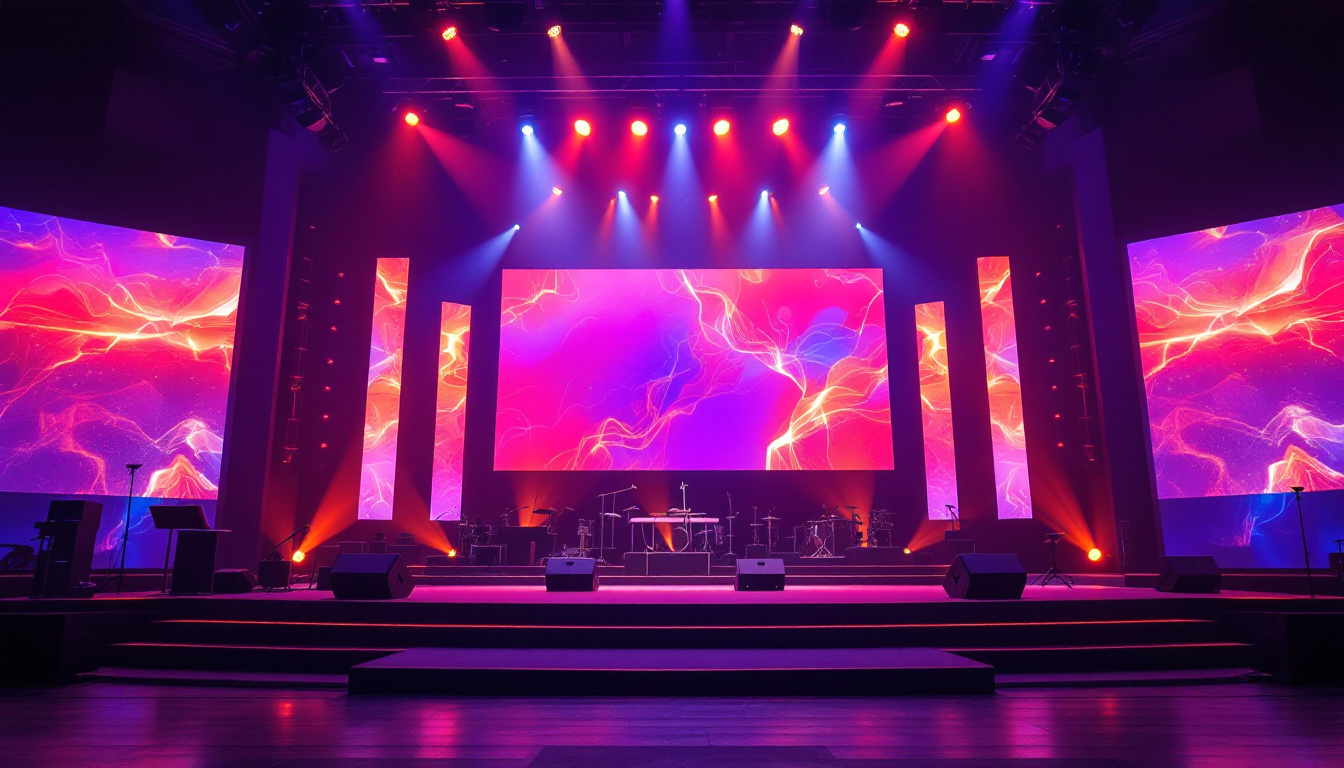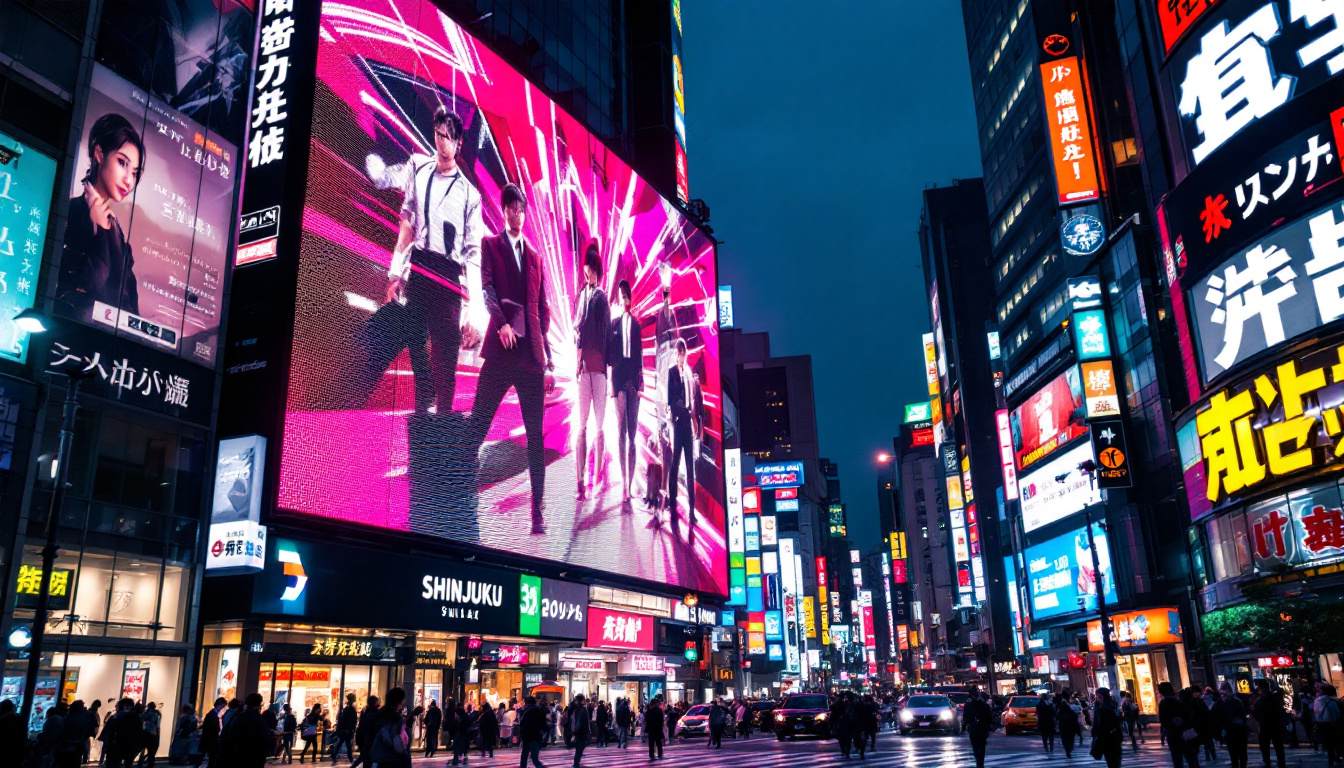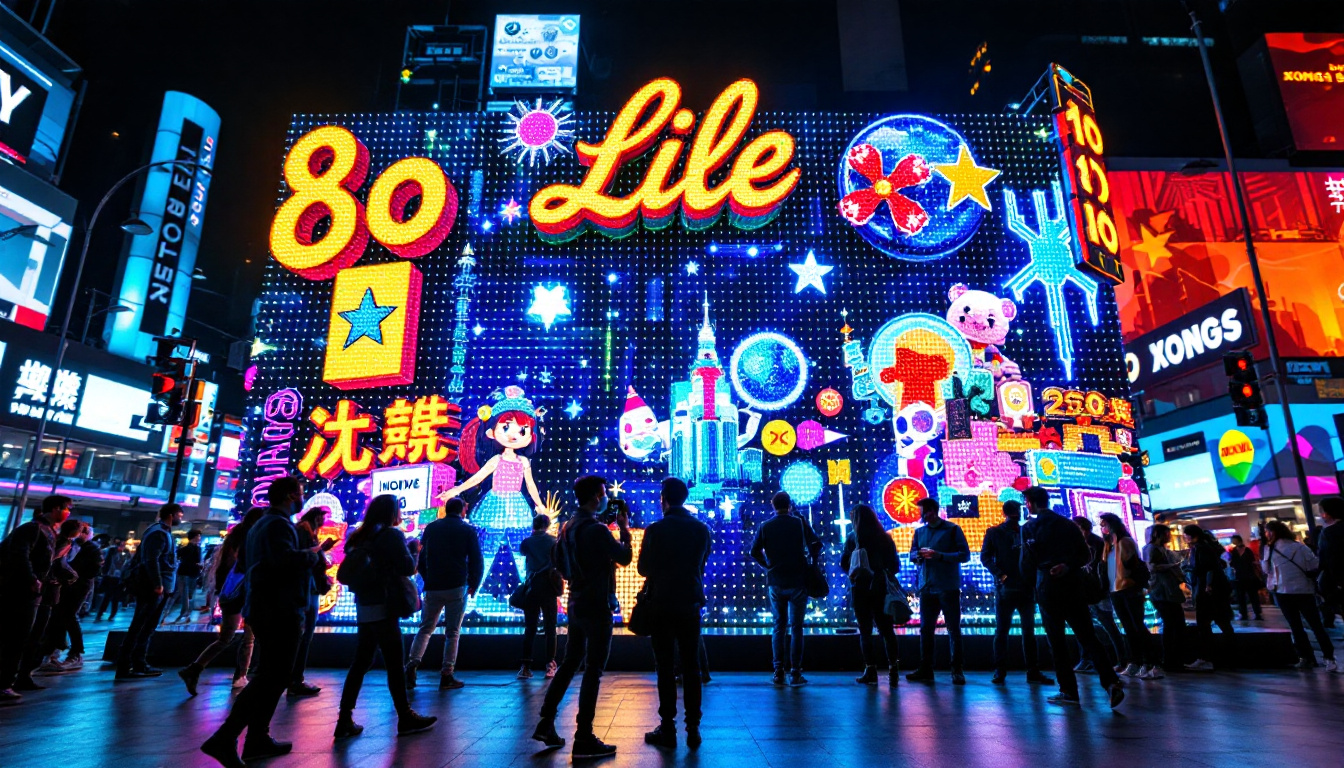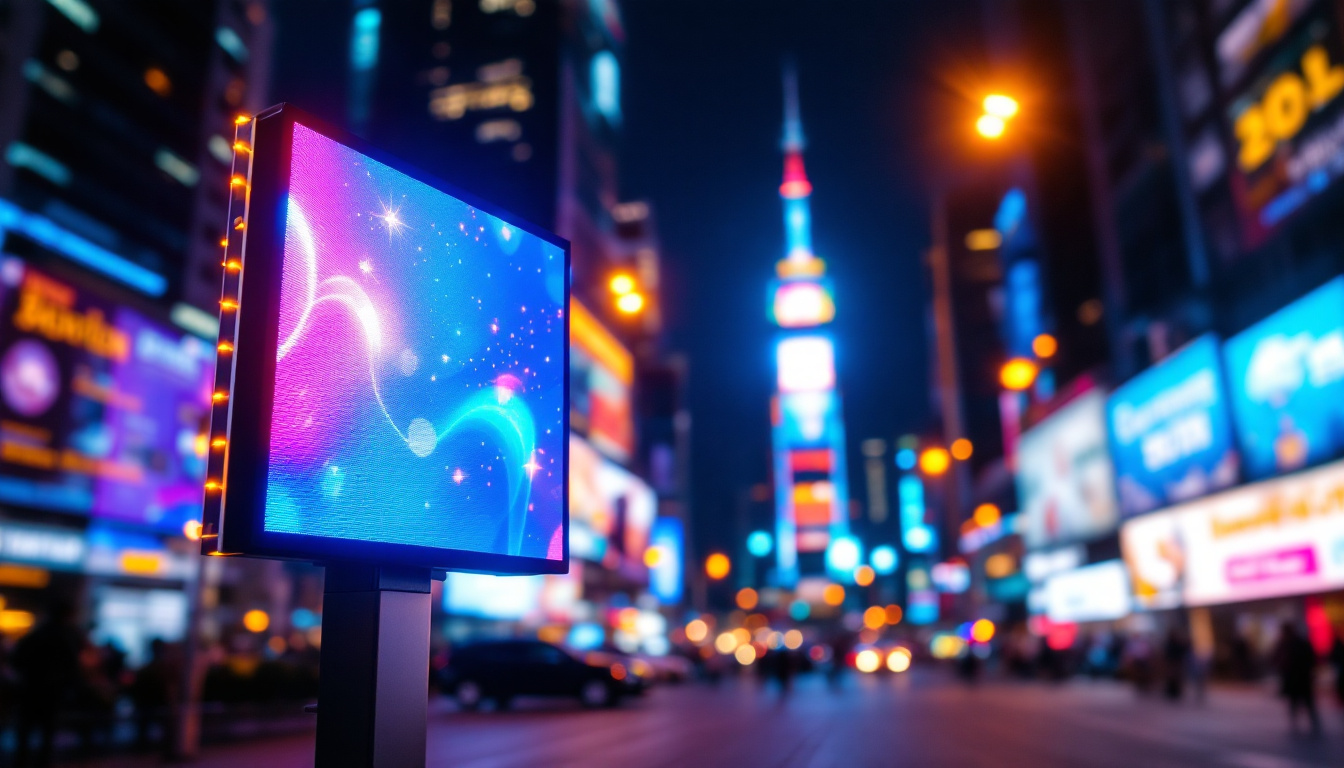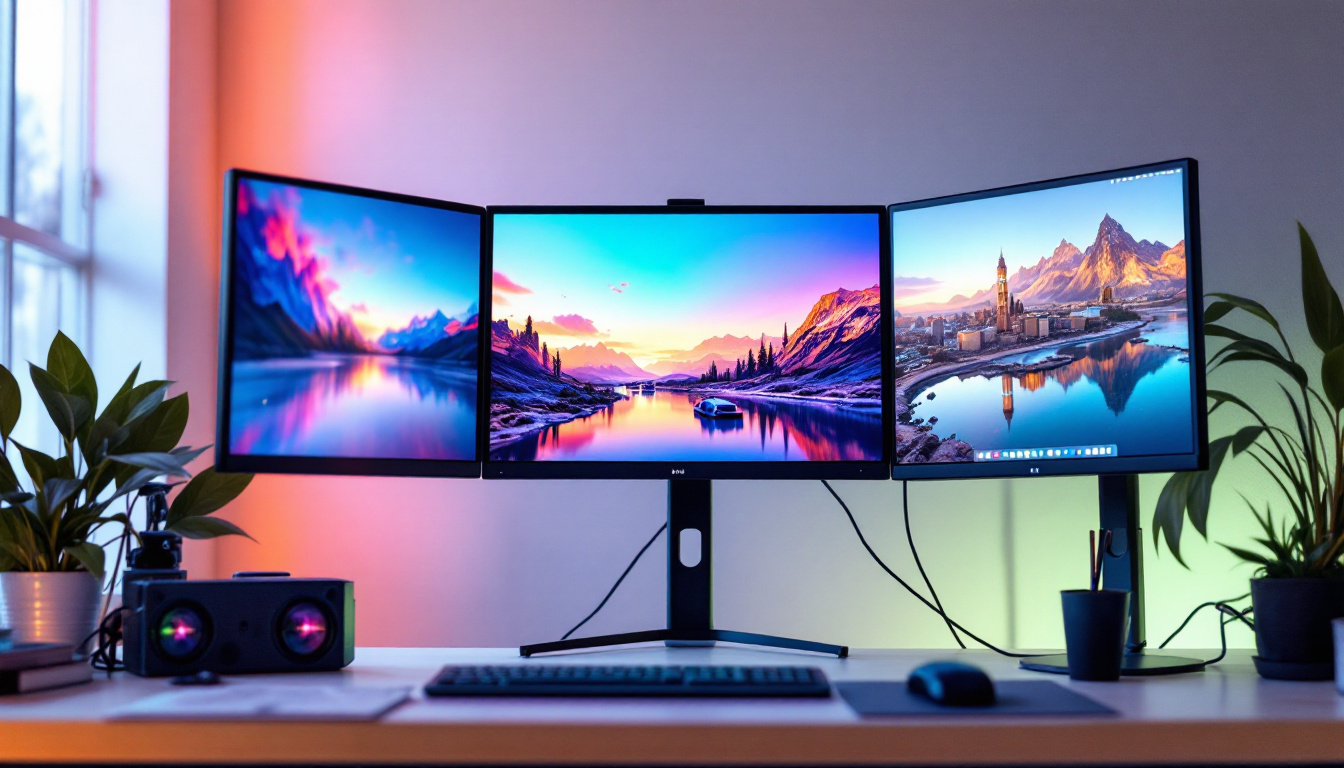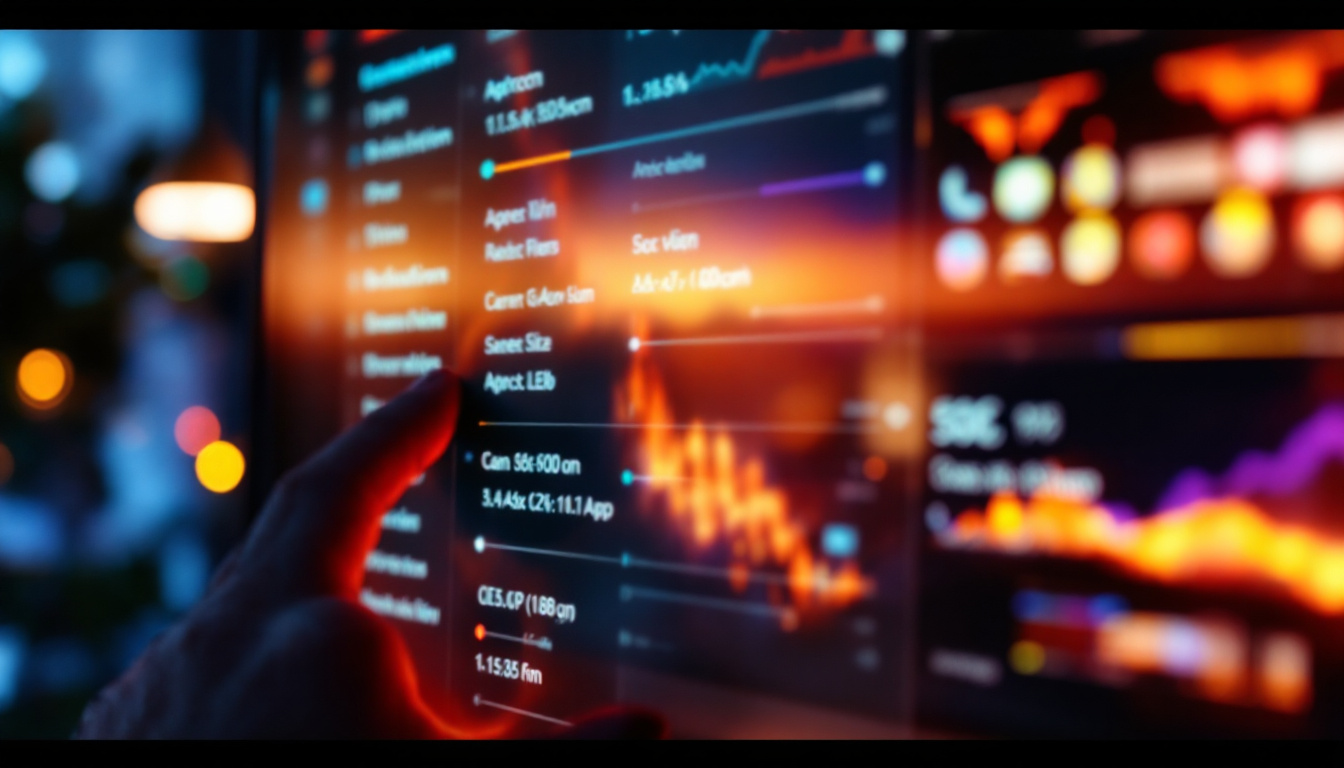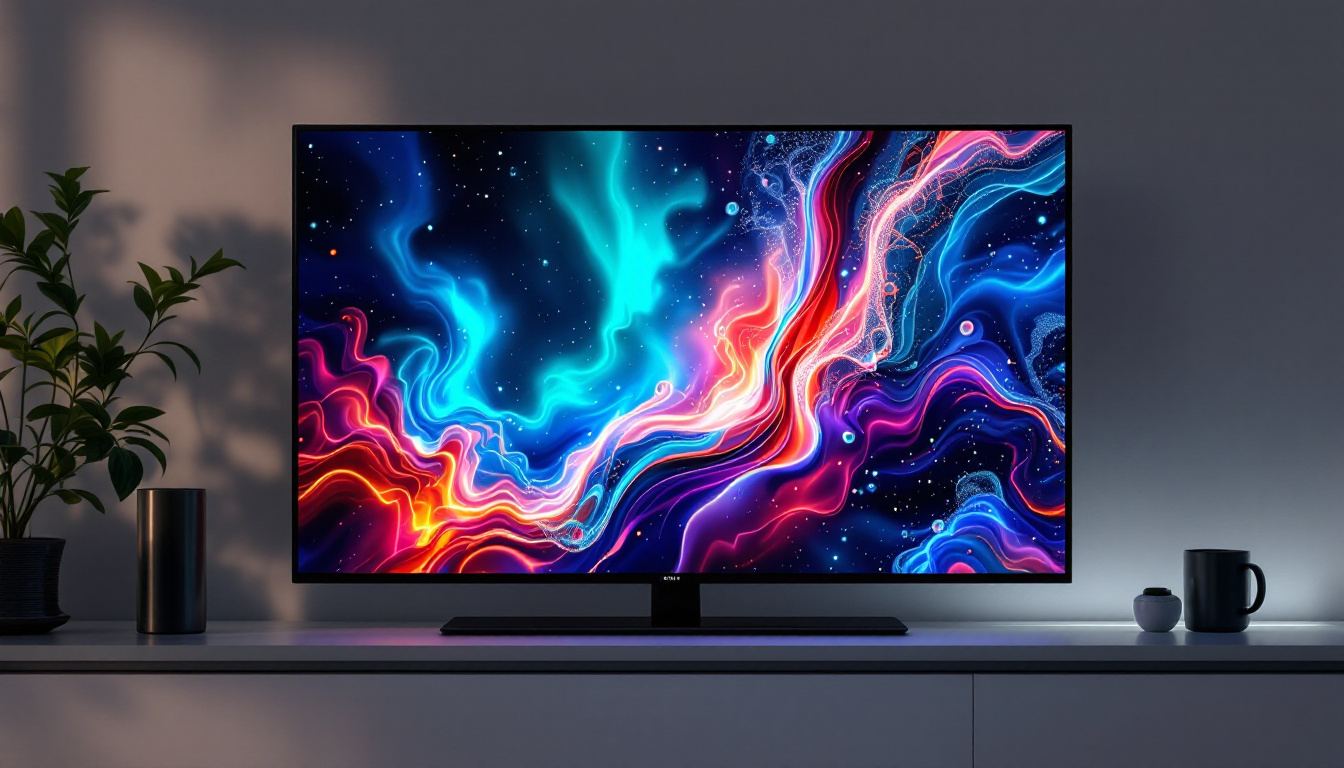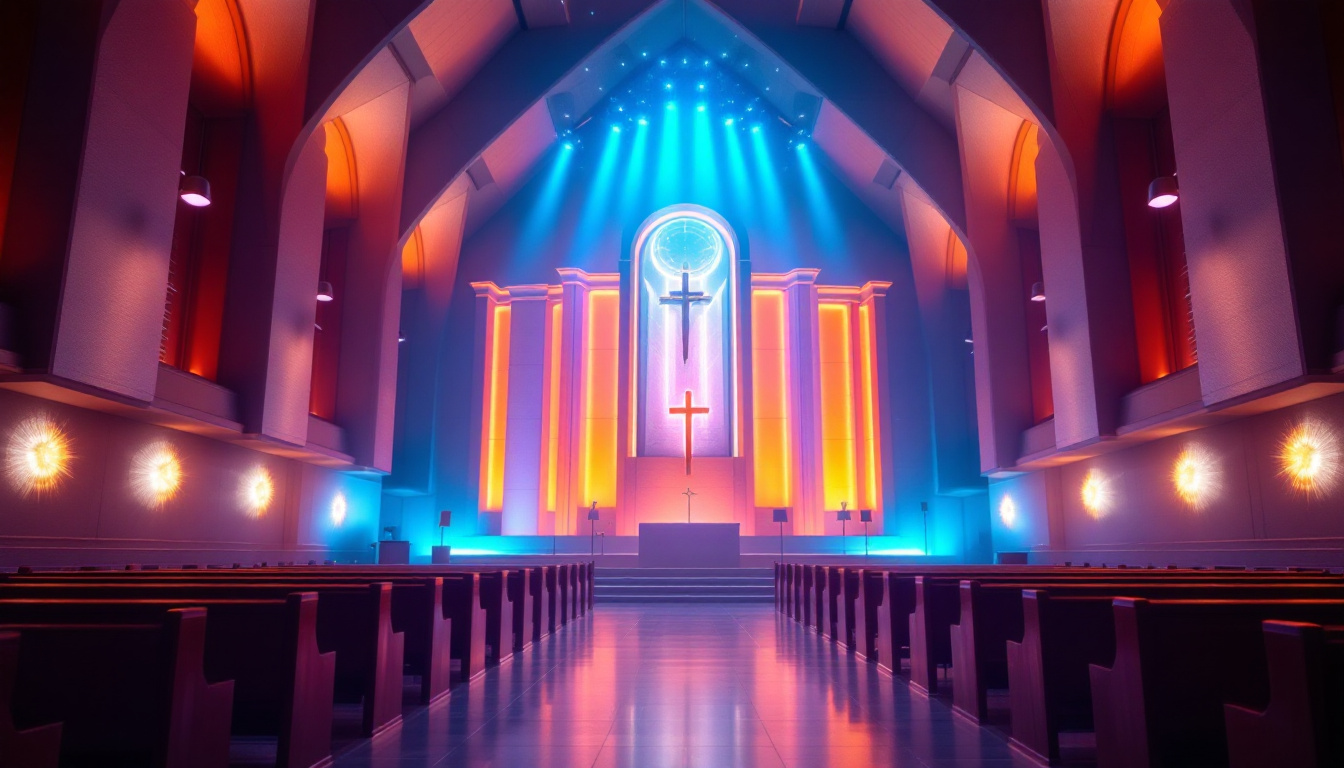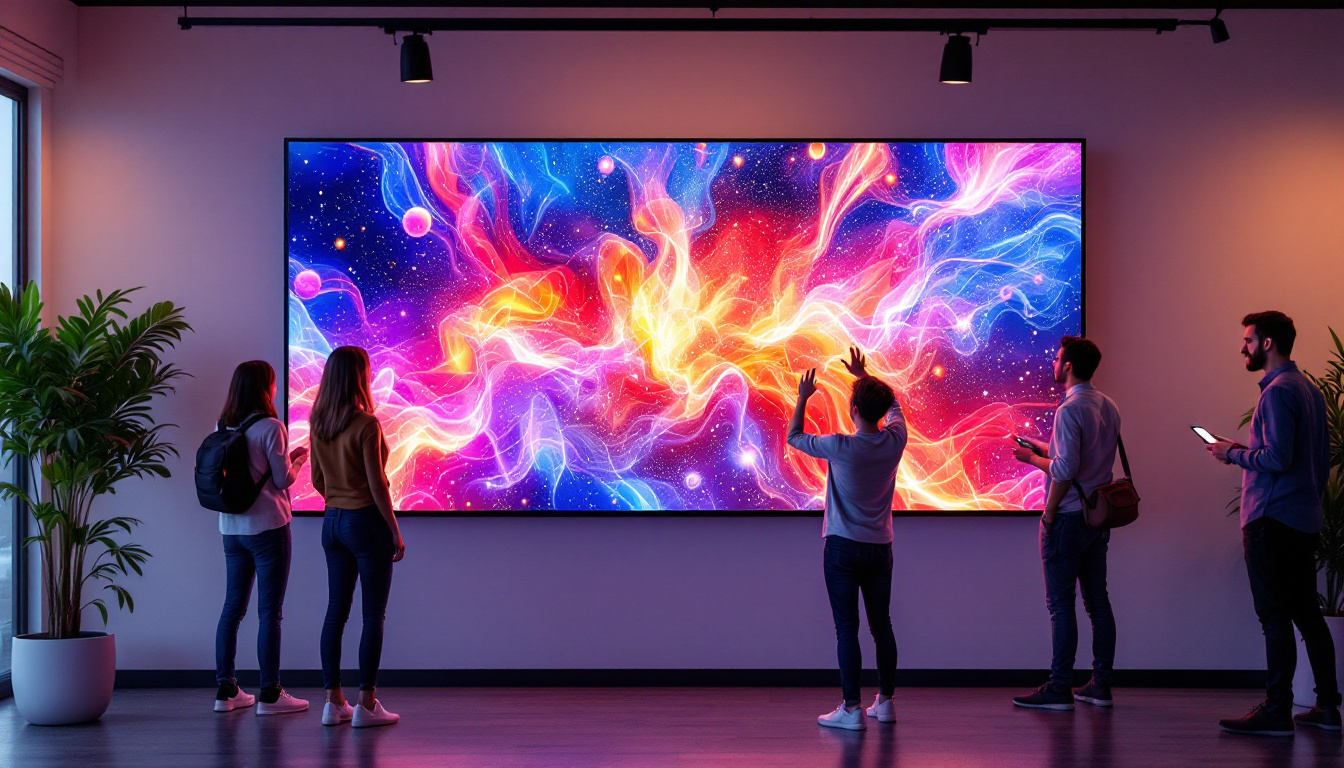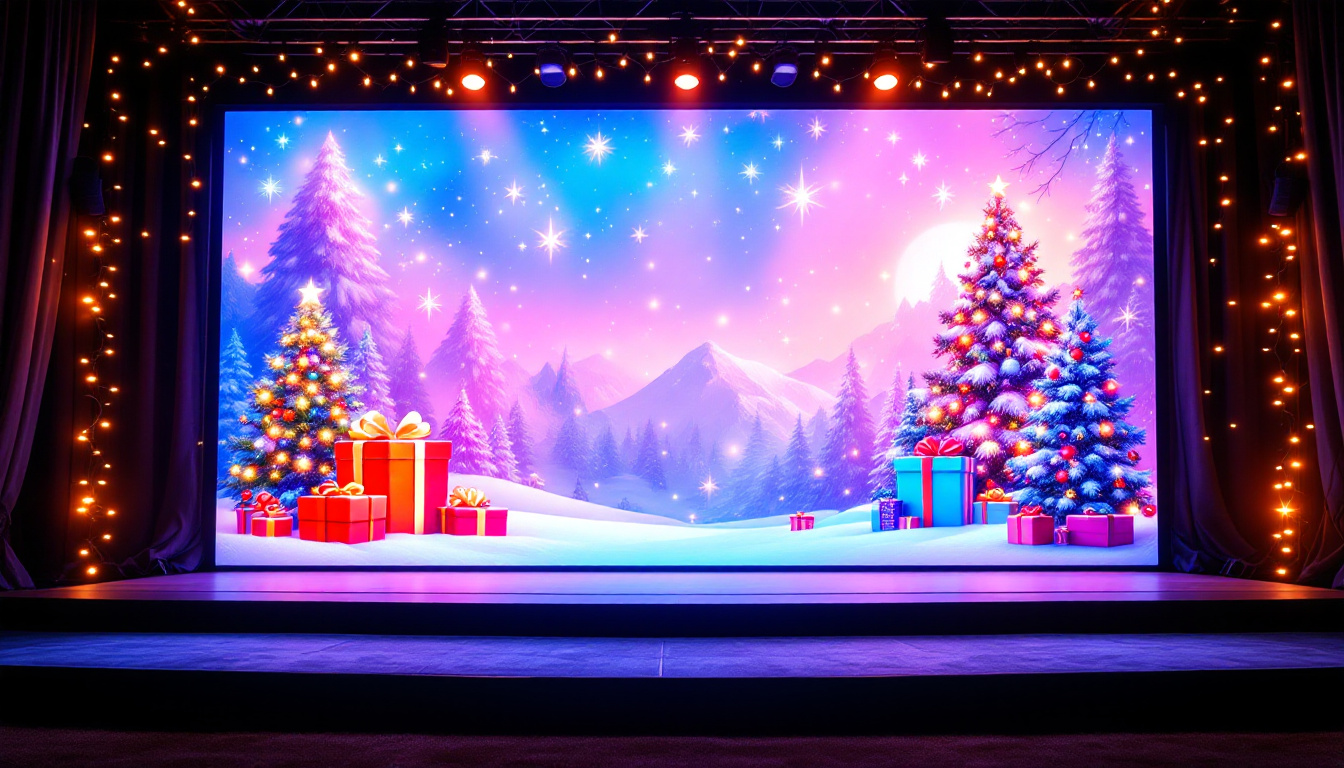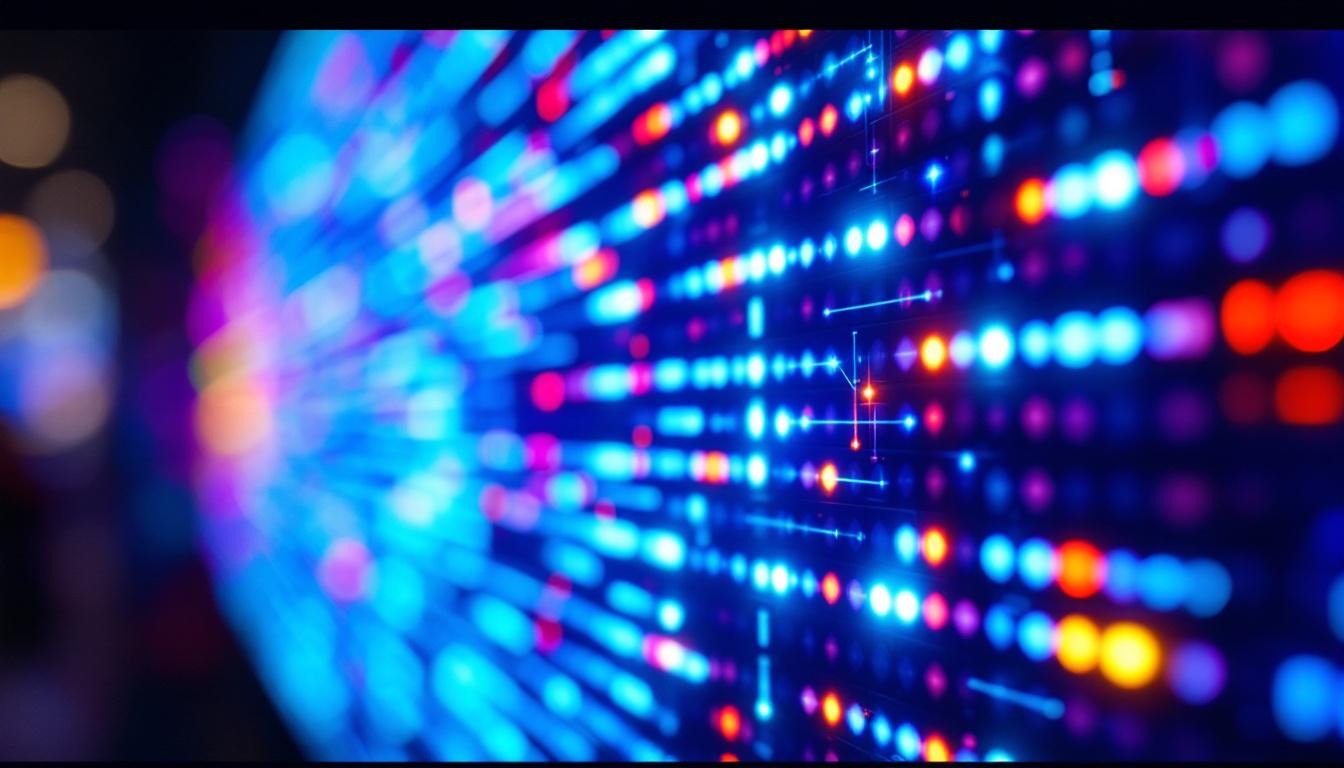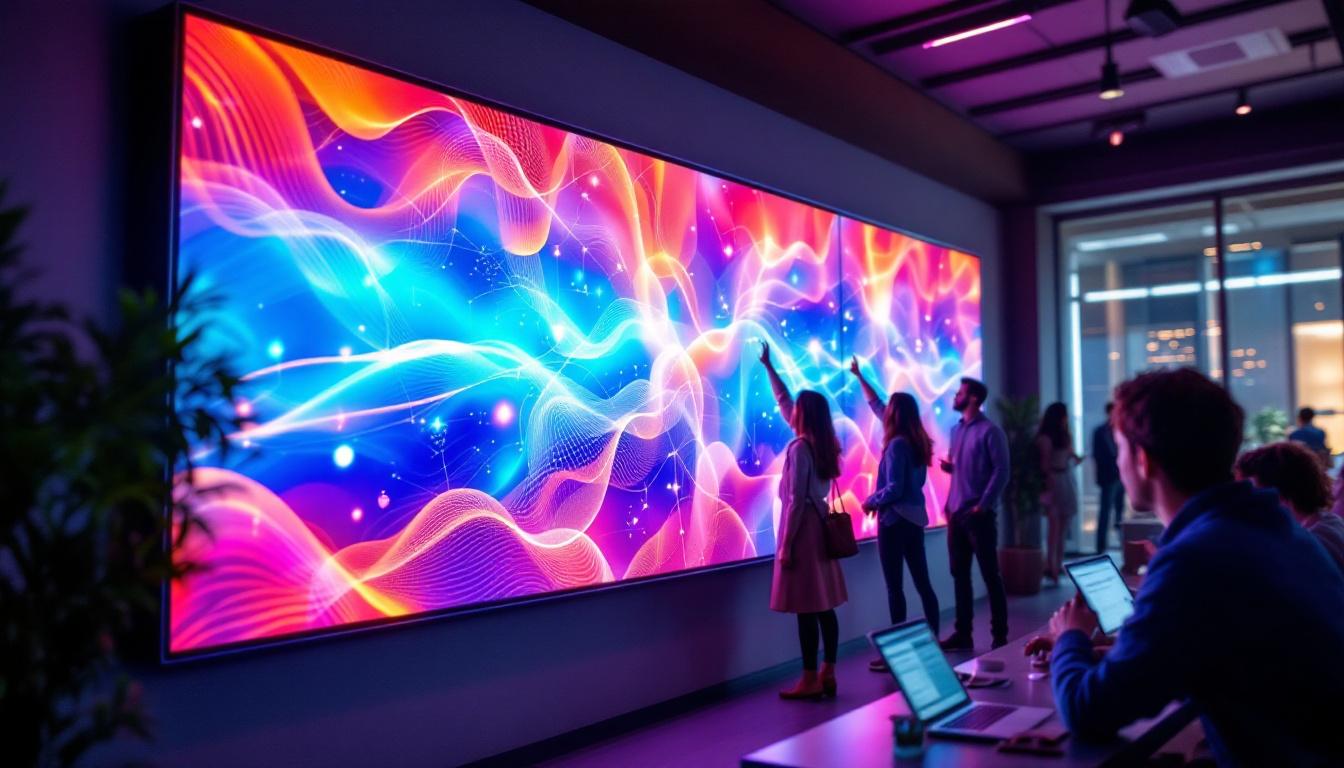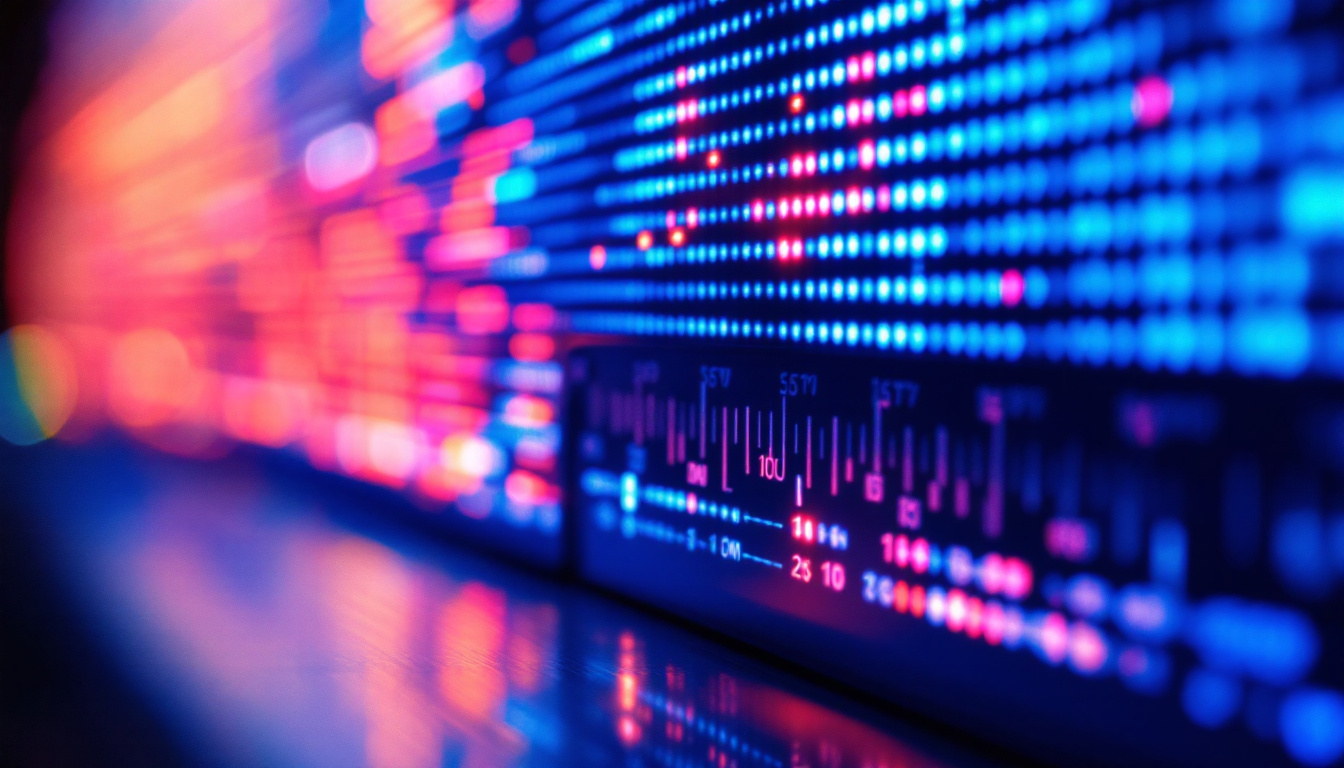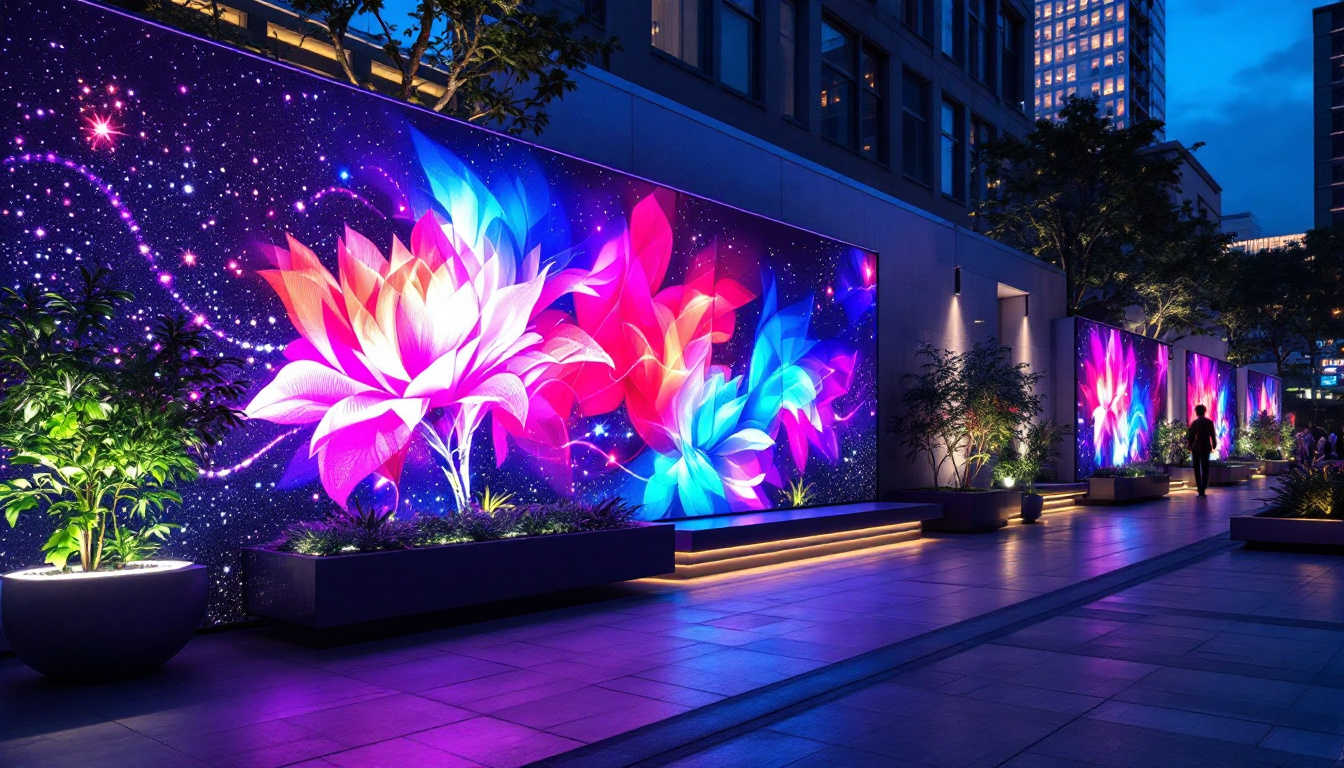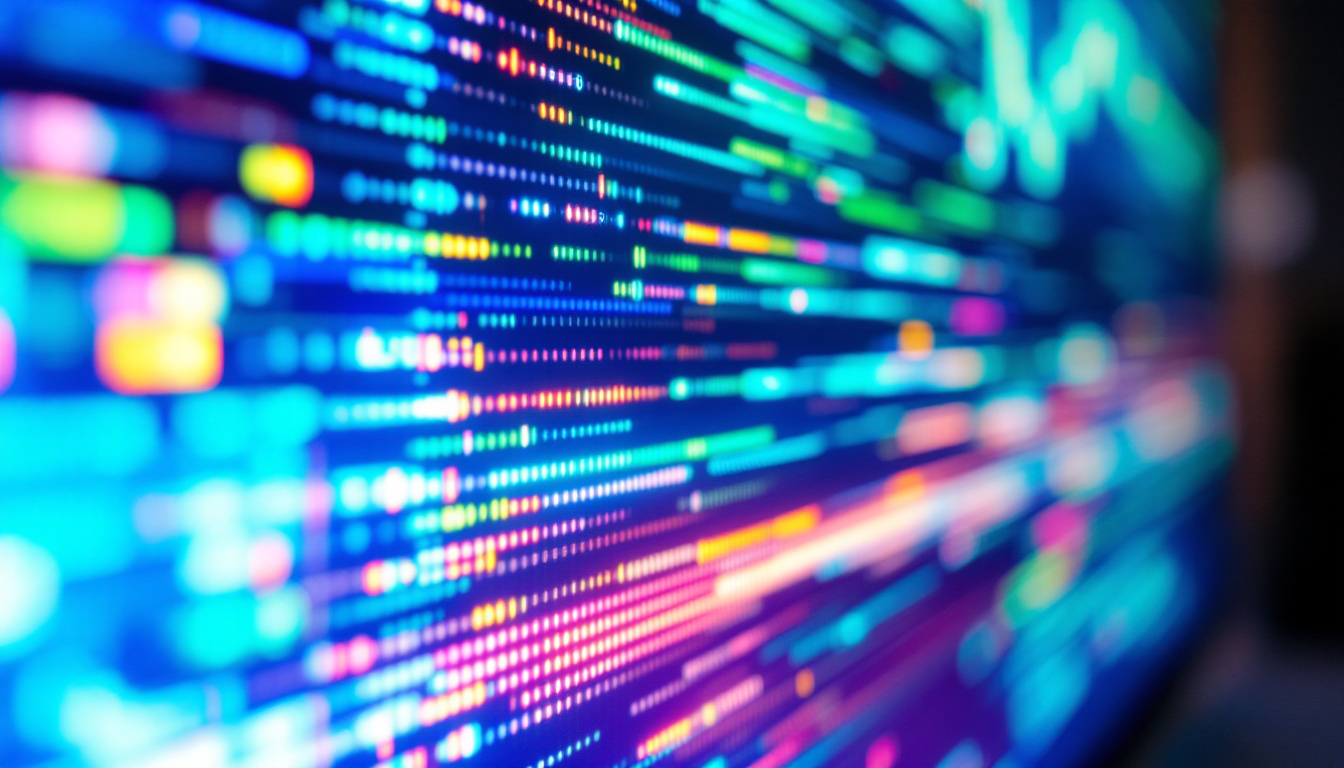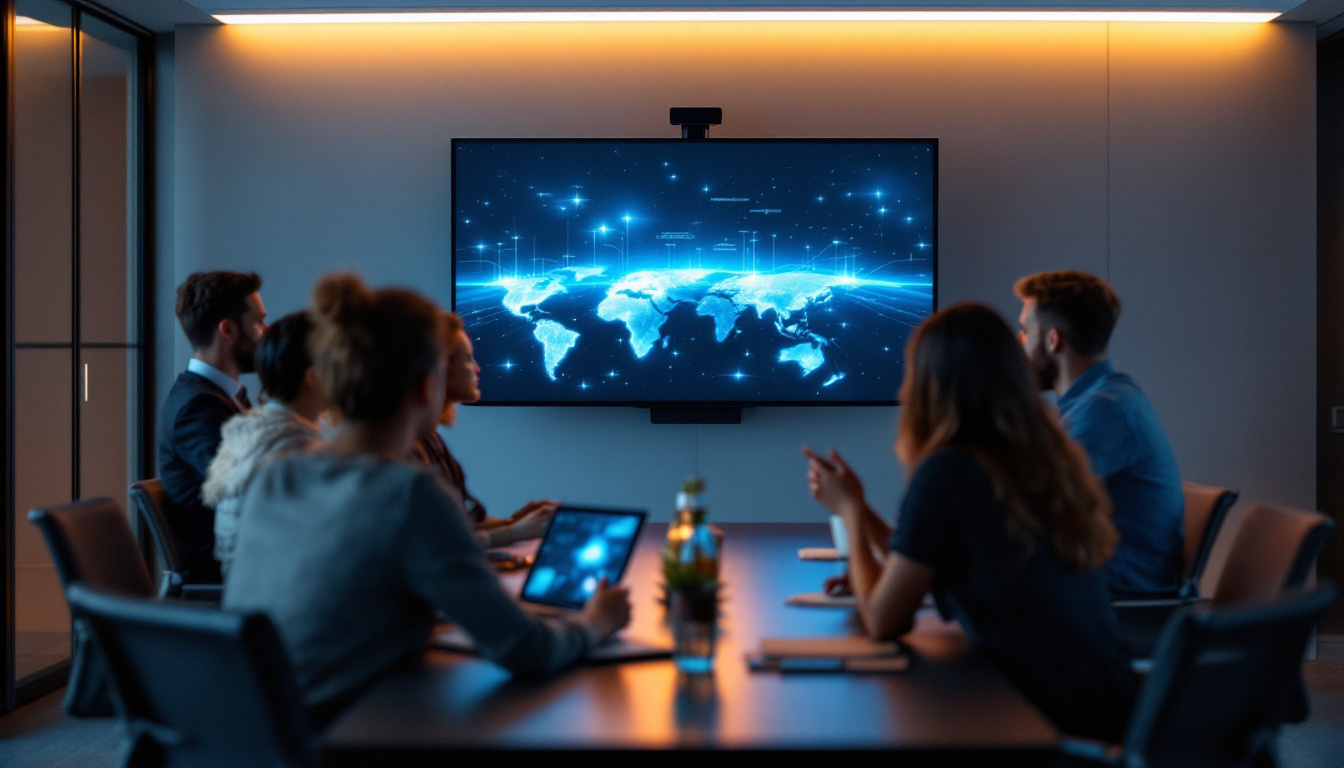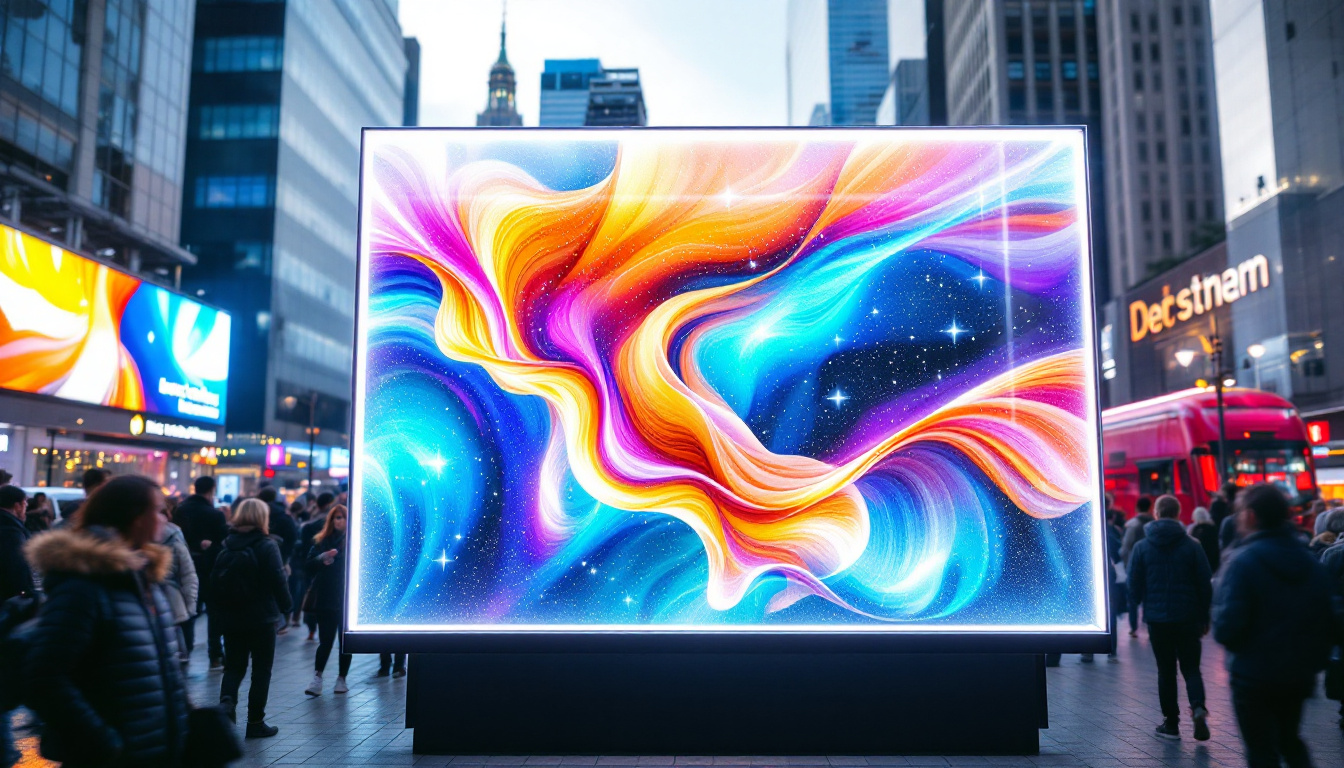In today’s fast-paced digital world, the demand for effective visual communication has surged. LED displays have emerged as a popular choice for various applications, from advertising to entertainment. This article delves into the intricacies of multi-screen LED displays, exploring their technology, applications, and benefits.
Understanding LED Technology
Light Emitting Diodes (LEDs) are semiconductor devices that emit light when an electric current passes through them. This technology has revolutionized the way visual content is presented, offering vibrant colors, high brightness, and energy efficiency. The compact size of LEDs allows for innovative designs and applications, making them a staple in modern lighting solutions, from residential to commercial use.
How LEDs Work
At the core of LED technology is the principle of electroluminescence. When electrons recombine with holes in the semiconductor material, energy is released in the form of photons, producing light. The color of the light emitted depends on the materials used in the semiconductor. By combining different colors, a full spectrum of light can be achieved. This versatility not only enhances aesthetic appeal but also enables LEDs to be used in various settings, from mood lighting in homes to functional lighting in workplaces.
Types of LED Displays
There are several types of LED displays, each designed for specific applications. The most common types include:
- Direct View LED Displays: These displays consist of individual LED modules that are arranged to form a larger screen. They are often used in outdoor advertising and large venues.
- LED Video Walls: Composed of multiple LED panels, video walls can create a seamless display for events, concerts, and exhibitions.
- OLED Displays: Organic LEDs offer superior contrast and color accuracy, making them popular for high-end applications such as televisions and smartphones.
In addition to these common types, there are also specialized LED displays, such as transparent LED screens that allow for visibility through the display while still providing vibrant imagery. These are particularly popular in retail environments, where they can be used to showcase products without obstructing the view of the store. Furthermore, flexible LED displays are emerging, which can be bent or shaped to fit unique spaces, opening up new possibilities for creative installations in architecture and design.
Another exciting development in LED technology is the integration of smart features, allowing for programmable lighting that can change colors or patterns based on user preferences or environmental conditions. This capability is particularly beneficial in smart homes and urban environments, where energy efficiency and adaptability are paramount. As LED technology continues to evolve, we can expect even more innovative applications that enhance both functionality and visual appeal.
Applications of Multi-Screen LED Displays
Multi-screen LED displays have found their way into various sectors, enhancing communication and engagement. Their versatility makes them suitable for numerous environments.
Advertising and Marketing
One of the most prominent applications of multi-screen LED displays is in advertising. Brands utilize these displays to capture attention with dynamic content, animations, and videos. The ability to change messages in real-time allows for targeted marketing campaigns that can adapt to audience preferences and behaviors. Moreover, the high resolution and brightness of LED technology ensure that advertisements stand out even in brightly lit environments, making them perfect for busy urban settings. Companies can also leverage data analytics to determine the most effective times and content for their displays, maximizing engagement and return on investment.
Entertainment and Events
In the entertainment industry, multi-screen LED displays are essential for concerts, festivals, and sporting events. They provide immersive experiences by displaying live feeds, graphics, and interactive content. The use of synchronized screens can create stunning visual effects, enhancing the overall atmosphere of the event. Additionally, these displays can be utilized for real-time audience interaction, such as live polls or social media feeds, allowing attendees to feel more connected to the event. The flexibility of multi-screen setups also enables event organizers to tailor the visual experience to different themes, ensuring that each event is unique and memorable.
Corporate and Educational Use
Multi-screen LED displays are also prevalent in corporate environments, where they are used for presentations, video conferencing, and information sharing. In educational institutions, these displays facilitate interactive learning experiences, allowing teachers to present dynamic content that engages students. Furthermore, in corporate settings, these displays can serve as digital signage to communicate important announcements or updates to employees, fostering a more informed workplace. In classrooms, the integration of multi-screen displays with interactive tools can promote collaborative learning, enabling students to work together on projects while accessing a wealth of information in real time. This technological advancement not only enhances the learning experience but also prepares students for a future where digital literacy is paramount.
Advantages of Multi-Screen LED Displays
The benefits of multi-screen LED displays extend beyond their visual appeal. They offer several advantages that make them an attractive choice for various applications.
High Visibility and Brightness
One of the standout features of LED displays is their high brightness levels. This makes them easily visible even in direct sunlight, which is particularly beneficial for outdoor advertising. The vibrant colors and sharp contrast ensure that content stands out, capturing the attention of passersby. Moreover, the ability to adjust brightness levels dynamically allows for optimal visibility in varying light conditions, ensuring that the display remains effective at any time of day. This adaptability enhances the overall user experience, making it easier for viewers to engage with the content presented.
Energy Efficiency
LED technology is known for its energy efficiency. Compared to traditional display technologies, such as LCD or projection, LED displays consume significantly less power. This not only reduces operational costs but also minimizes the environmental impact, making them a sustainable choice for businesses. Additionally, many modern LED displays come equipped with smart technology that allows for further energy savings through features like automatic dimming based on ambient light levels. This means that not only do businesses save on electricity bills, but they also contribute to a greener planet by reducing their carbon footprint.
Durability and Longevity
LED displays are built to last. They are resistant to shock, vibration, and extreme weather conditions, making them suitable for both indoor and outdoor use. With proper maintenance, an LED display can last for over 100,000 hours, ensuring a long-term investment for businesses. Furthermore, the modular design of many multi-screen LED setups allows for easy repairs and upgrades, meaning that if a single panel fails, it can be replaced without the need to overhaul the entire system. This not only enhances the longevity of the display but also ensures that businesses can keep their content fresh and relevant without incurring significant downtime or costs.
Challenges and Considerations
While multi-screen LED displays offer numerous advantages, there are challenges and considerations that need to be addressed before implementation.
Initial Investment Costs
The upfront cost of purchasing and installing multi-screen LED displays can be significant. Businesses must weigh the initial investment against the long-term benefits, considering factors such as increased visibility and potential revenue generation from advertising. Additionally, it is essential to factor in ongoing maintenance costs, which can include repairs, software updates, and electricity consumption. A thorough cost-benefit analysis can help organizations make informed decisions about whether the investment aligns with their overall marketing strategy and budget.
Content Management
Managing content across multiple screens can be complex. Businesses need to invest in content management systems that allow for seamless updates and synchronization of content. This requires planning and resources to ensure that the displays are effectively utilized. Moreover, the content itself must be engaging and relevant to the target audience, necessitating a creative approach to design and messaging. Regularly refreshing the content can help maintain viewer interest and maximize the impact of the displays, making it crucial for businesses to establish a content calendar and strategy that aligns with their promotional goals.
Technical Expertise
Operating and maintaining multi-screen LED displays may require technical expertise. Organizations might need to hire specialists or provide training to staff to ensure that the displays function optimally and that any issues are promptly addressed. Furthermore, as technology evolves, staying updated with the latest advancements in display technology and software is vital. This could involve attending workshops, participating in industry conferences, or subscribing to relevant publications to ensure that the team is equipped with the knowledge to leverage the full potential of their LED display systems. Additionally, having a dedicated support team can facilitate quicker troubleshooting and minimize downtime, ultimately enhancing the overall effectiveness of the displays.
Future Trends in LED Display Technology
The landscape of LED display technology is constantly evolving. As advancements continue to emerge, several trends are shaping the future of multi-screen LED displays.
Enhanced Resolution and Pixel Density
As consumer expectations rise, manufacturers are focusing on improving resolution and pixel density. Higher resolution displays provide sharper images and more detailed visuals, enhancing the overall viewing experience. This trend is particularly significant for applications where image quality is paramount, such as in retail and entertainment.
Integration with Smart Technologies
Multi-screen LED displays are increasingly being integrated with smart technologies. This includes features such as touch interactivity, IoT connectivity, and data analytics. These advancements enable businesses to create more engaging and personalized experiences for their audiences.
Sustainability and Eco-Friendly Practices
As environmental concerns grow, the demand for sustainable practices in display technology is on the rise. Manufacturers are exploring eco-friendly materials and energy-efficient designs to reduce the carbon footprint of LED displays. This shift not only benefits the environment but also appeals to consumers who prioritize sustainability.
Conclusion
Multi-screen LED displays have transformed the way visual content is presented across various sectors. Their vibrant colors, high brightness, and energy efficiency make them an ideal choice for advertising, entertainment, and corporate applications. While there are challenges to consider, the benefits far outweigh the drawbacks, making LED displays a valuable investment for businesses looking to enhance their visual communication.
As technology continues to advance, the future of multi-screen LED displays looks promising. With enhanced resolution, smart integrations, and a focus on sustainability, these displays are set to play an even more significant role in shaping the way information is shared and experienced. Embracing this technology can lead to improved engagement, better brand visibility, and ultimately, greater success in a competitive landscape.
Discover LumenMatrix’s Innovative LED Display Solutions
Ready to elevate your visual communication with the vibrant colors, high brightness, and energy efficiency of multi-screen LED displays? Look no further than LumenMatrix, a leader in LED display technology. Our extensive range of solutions, including Indoor and Outdoor LED Wall Displays, Vehicle LED Displays, LED Poster Displays, LED Sports Displays, Floor LED Displays, Custom LED Displays, All-in-One LED Displays, and LED Transparent Displays, are designed to captivate your audience and amplify your message. Embrace the future of digital signage with LumenMatrix and create unforgettable visual experiences. Check out LumenMatrix LED Display Solutions today and see how we can help you make a lasting impression in a competitive landscape.

